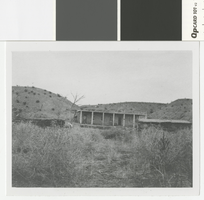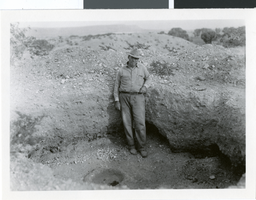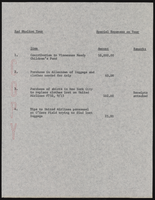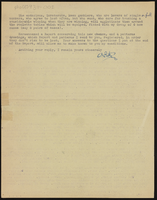Search the Special Collections and Archives Portal
Search Results
Las Vegas Review-Journal Photograph Collection
Identifier
Abstract
The Las Vegas Review-Journal Photograph Collection depicts several events in Las Vegas, Nevada from 1935 to 1983 that were documented by Nevada’s largest newspaper, the Las Vegas Review-Journal. The photographs depict the fire at the Las Vegas School in 1935, the fire at the MGM Grand Hotel and Casino in 1980, an exhibition at the Lost City Museum in 1973, a memorial event honoring the first permanent school in Las Vegas in 1980, and an exhibition at the Nevada State Museum and Historical Society in 1983. The collection also contains photographs of some denizens of Las Vegas, including people at the Hughes Bar in Las Vegas, the last Union Pacific passenger train in Las Vegas, and schoolchildren at the Las Vegas School.
Archival Collection
Showgirl and Stardust logo image unveiled on Western Pacific Airlines: video, approximately 1985 to 1995
Level of Description
Scope and Contents
Segment by unknown San Diego newstation on the expanding population, real estate, and economic upturn that Las Vegas is experiencing. Video opens with a Stardust Hotel and Casino craps game, while a voiceover describes Las Vegas as "Lost Vegas" and "Lost Wages" but that tourists and locals live together side-by-side. Reporter explains the population is rapidly growing, and many Californians and San Diegans are moving to the city, as it rebrands from "Sin City" to a reasonable, welcoming place to live. The reporter explains that many casinos were "in the red" and how it was in a economic downturn. However, many new casinos are being expanded or new ones built now that the economy is looking up. Features many shots of the Stardust Hotel interior and exterior. Original media VHS, color, aspect ratio 4 x 3, frame size 720 x 486.
Archival Collection
Collection Name: Stardust Resort and Casino Records
Box/Folder: Digital File 00, Box 031
Archival Component

Photograph of Daniel Bonnelli's home at landing on Colorado River, circa 1920
Date
Archival Collection
Description
The remains of Daniel Bonelli's house on the Colorado River, covered by Lake Mead
Transcribed Notes: Transcribed from back of photo: "Home of Daniel Bonnelli at landing on Colorado River"
Image
Rancho Mirage Condos, 1982 February 10
Level of Description
Scope and Contents
This set includes: site plans, floor plans, exterior elevations, redlining and preliminary sketches.
This set includes drawings for M.E.I. Lost World Resort (client).
Archival Collection
Collection Name: Gary Guy Wilson Architectural Drawings
Box/Folder: Roll 354
Archival Component
Marty Brill recording, 1993 May 29
Level of Description
Scope and Contents
Brill discusses a car accident in which he lost a finger, depression after this accident, his move from music to comedy, his first live performance, his dispute with Merv Griffin, his acting career, his thoughts on then-current comedy and culture.
Archival Collection
Collection Name: Arnold Shaw Interviews and Performance Recordings
Box/Folder: Digital File 00
Archival Component

Correspondence, Levi Syphus to Sadie George
Date
Archival Collection
Description
Text

Photograph of John Perkins, Pueblo Grande de Nevada, 1926
Date
Archival Collection
Description
Image



